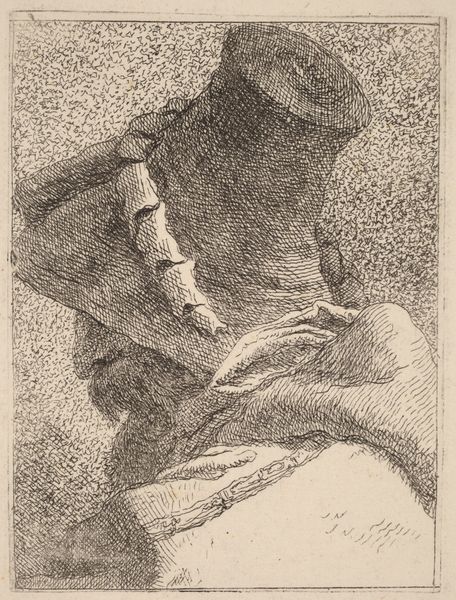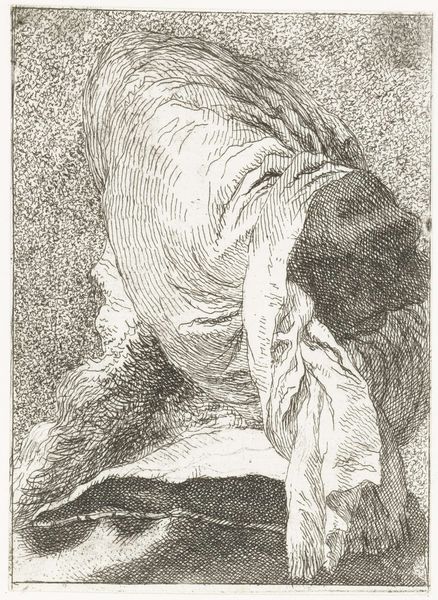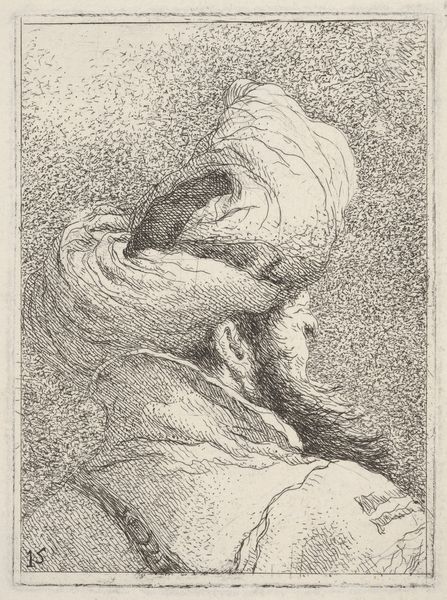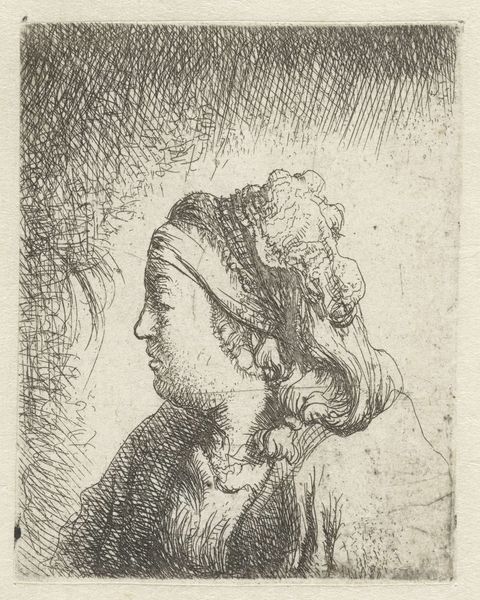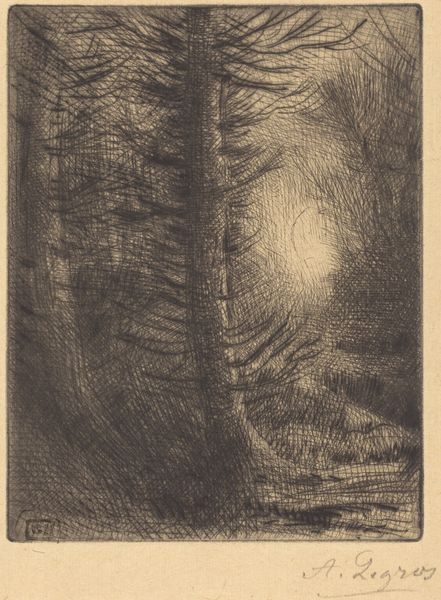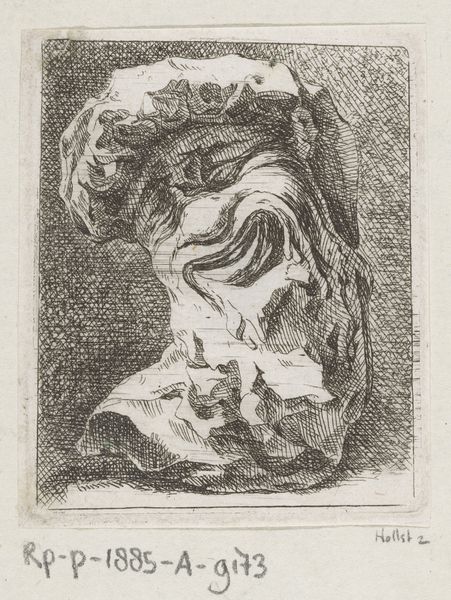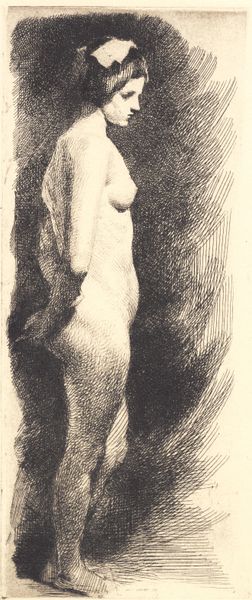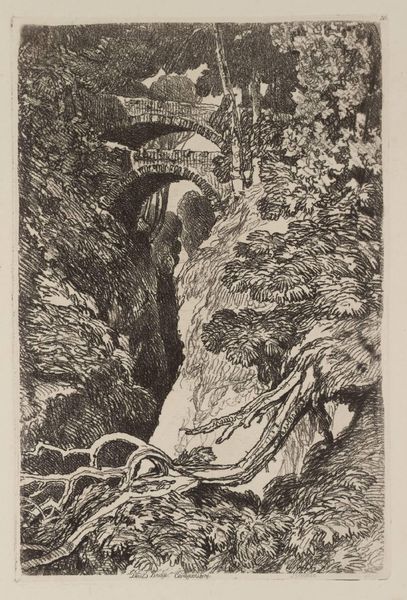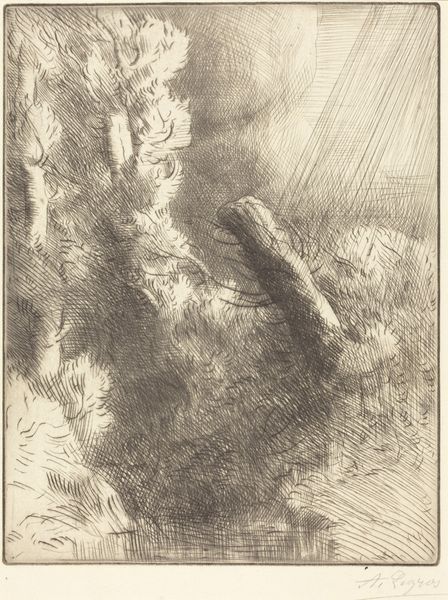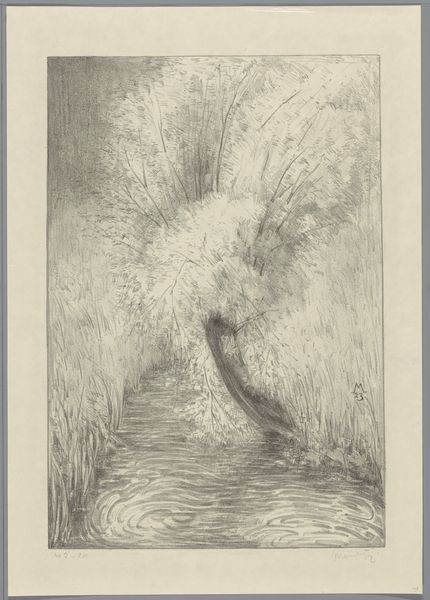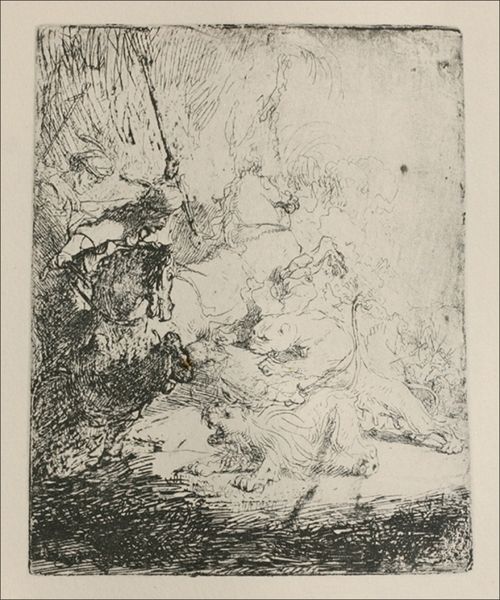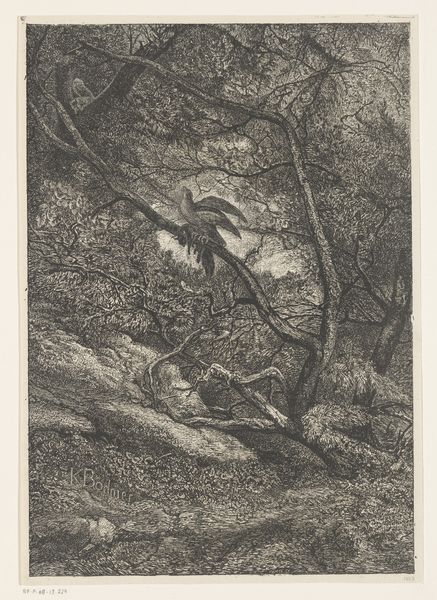
Man in a turban, depicted in bust length format from behind in three-quarters view, from the series 'Collection of heads' (Raccolta di teste) 1770
0:00
0:00
Dimensions: sheet: 7 3/8 x 4 3/4 in. (18.8 x 12.1 cm) plate: 4 3/4 x 3 1/4 in. (12.1 x 8.2 cm)
Copyright: Public Domain
Editor: Here we have Giovanni Domenico Tiepolo’s “Man in a turban, depicted in bust length format from behind in three-quarters view, from the series 'Collection of heads' (Raccolta di teste),” created around 1770. It’s an etching. I find the way he’s captured the texture of the fabric fascinating. What do you see in this piece? Curator: The turban is indeed key. It’s not just a head covering; it’s a powerful symbol. Throughout history, the turban has represented diverse cultures, religions, and social statuses. In Tiepolo’s time, it might have signaled the exotic "Orient," a region of fascination and mystery for Europeans, evoking trade routes, scholarly pursuits, military campaigns, or simply generalized assumptions about the East. Editor: So, it's not necessarily a portrait of a specific individual, but more of a symbolic representation? Curator: Precisely. It invites us to consider how artists use costume and pose to construct meaning. Ask yourself, why depict this man from behind? Is it a way to make him more anonymous, more of a type than an individual? Is it also inviting the viewer to "try on" the role implied? Also, the turban is like a repository: What histories, real or imagined, are folded into those swirling fabrics? Editor: That's a really interesting way of looking at it. It almost feels like the man is less important than the cultural baggage he carries. The gaze is intentionally avoided and it centers the focus on his attire. Curator: It becomes less about the man, and more about the idea of the "other." This was a period when Europe was heavily engaged in colonialism. What role does the "Collection of heads" series play in that political-historical context, or vice versa? And how might we be complicit in such portrayals, even today? Editor: This really challenges my initial perception of it as just a study of texture and light. Thank you. I'll definitely look at portraits differently from now on. Curator: It's a potent reminder that what we see is always shaped by layers of cultural memory and power dynamics. Now it's time to look at how different contexts can radically alter such impressions!
Comments
No comments
Be the first to comment and join the conversation on the ultimate creative platform.
